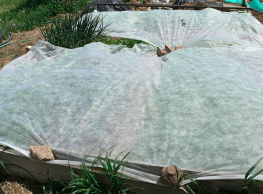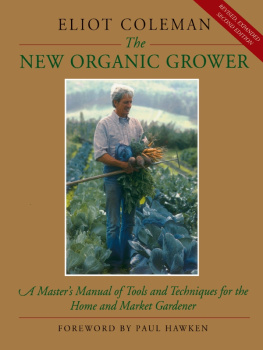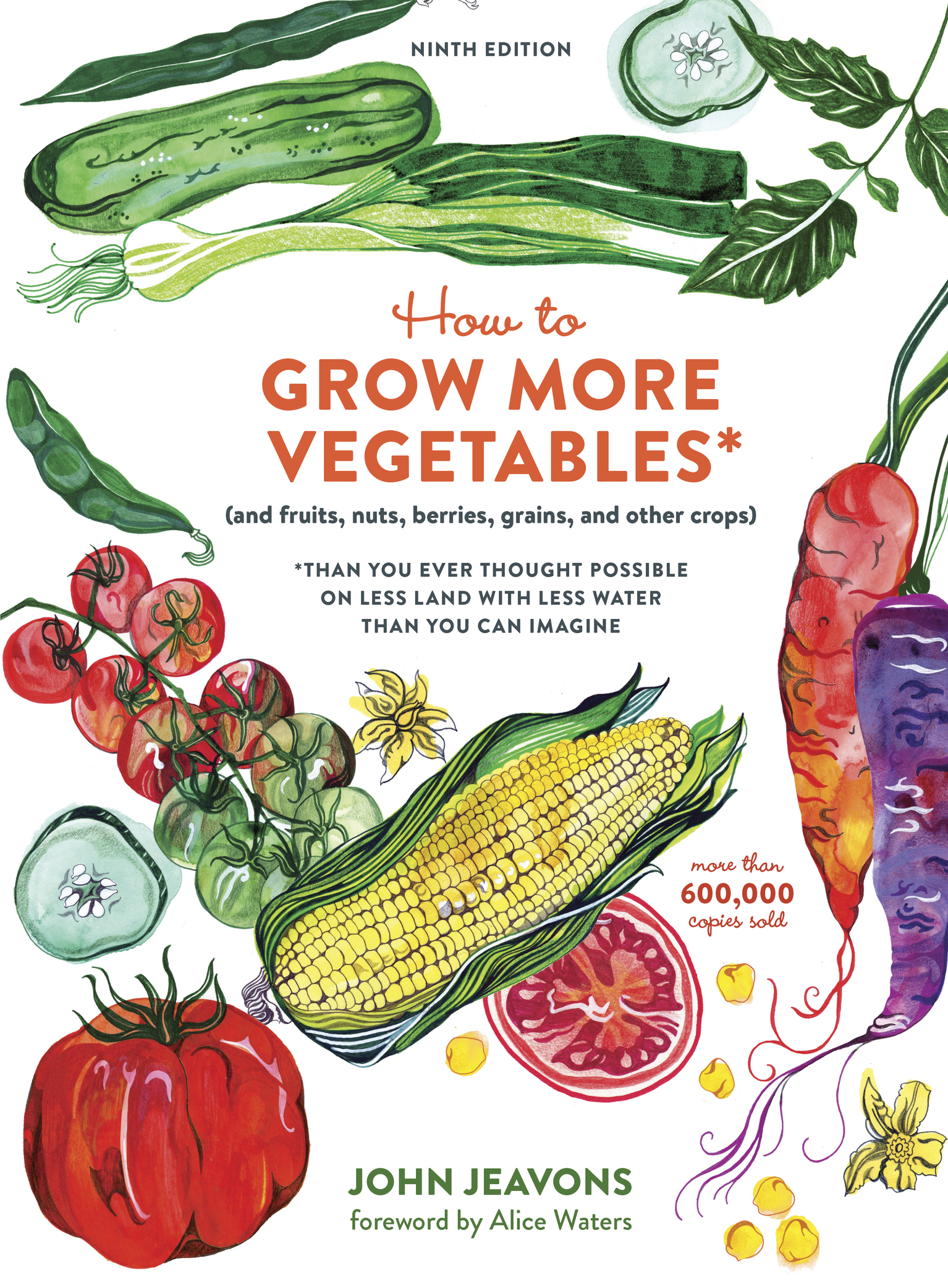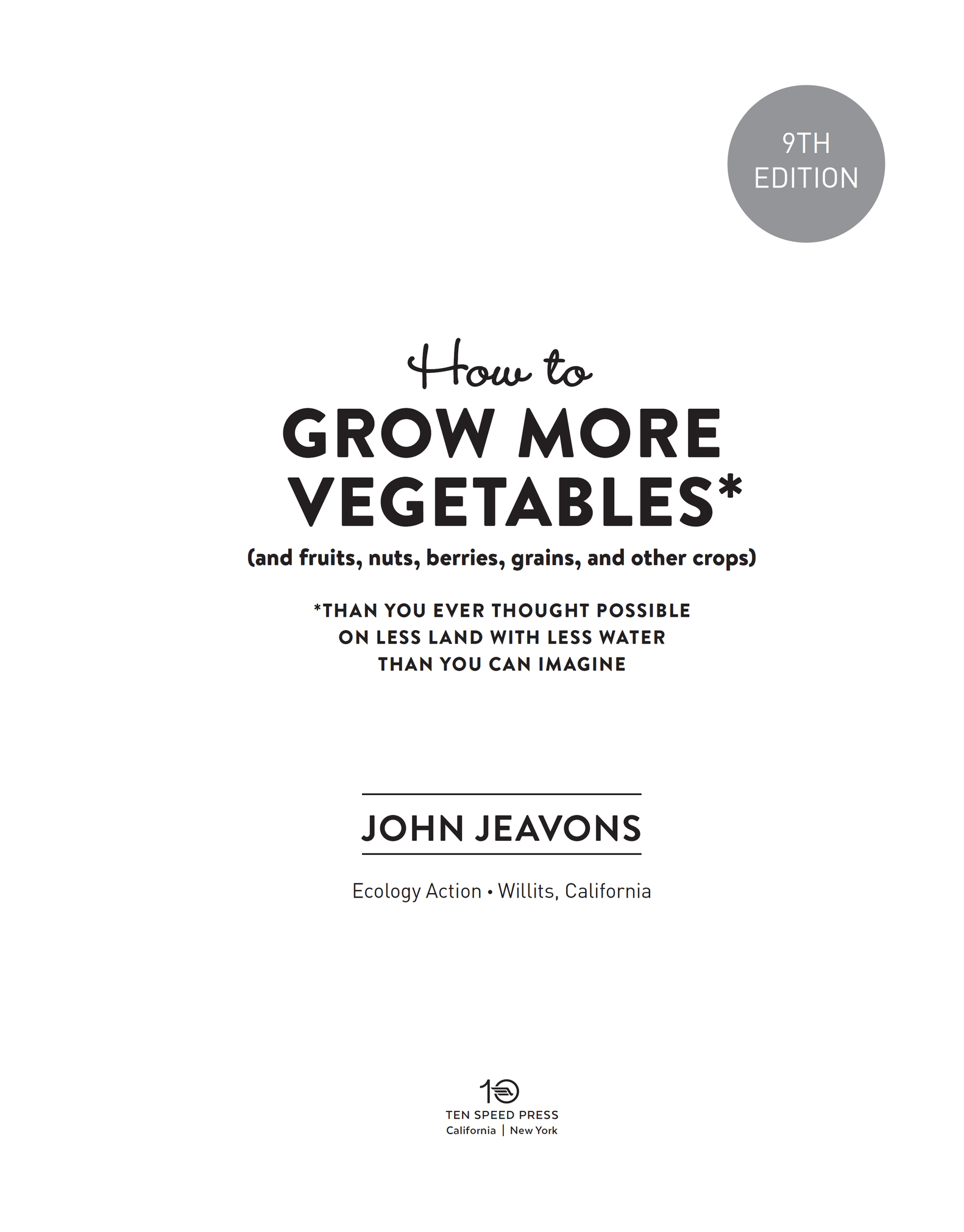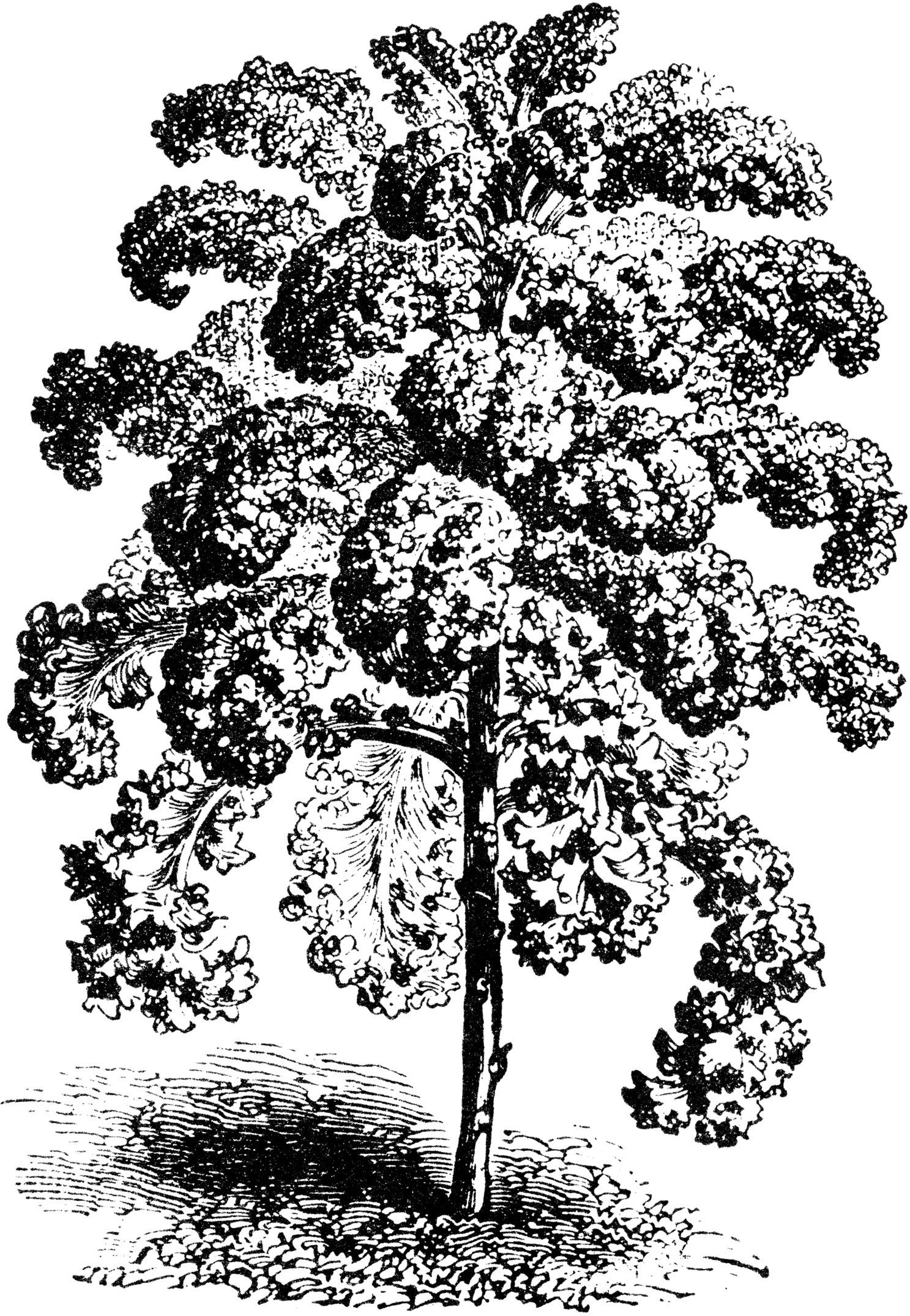Contents
Mission: Ecology Action teaches people worldwide to better feed themselves while building and preserving the soil and conserving resources.
To see a dynamic three-minute animation of biologically intensive food growing, visit www.biointensive.net.
Copyright 1974, 1979, 1982, 1991, 1995, 2002, 2006, 2012, 2017 by Ecology Action of the Midpeninsula
All rights reserved.
Published in the United States by Ten Speed Press, an imprint of the Crown Publishing Group, a division of Penguin Random House LLC, New York.
www.crownpublishing.com
www.tenspeed.com
Ten Speed Press and the Ten Speed Press colophon are registered trademarks of Penguin Random House LLC.
www.growbiointensive.org
www.bountifulgardens.org
www.commongroundgarden.org
www.johnjeavons.info
Library of Congress Cataloging-in-Publication Data
Names: Jeavons, John, author.
Title: How to grow more vegetables* (and fruits, nuts, berries, grains, and other crops) *than you ever thought possible on less land with less water than you can imagine / John Jeavons.
Description: 9th edition. | California; New York: Ten Speed Press, 2017. |
Includes index.
Identifiers: LCCN 2017012150
Subjects: LCSH: Vegetable gardening. | Organic gardening. | Biointensive gardening.
Classification: LCC SB324.3 .J43 2017 | DDC 635--dc23
LC record available at https://lccn.loc.gov/2017012150
Trade Paperback ISBN9780399579189
Ebook ISBN9780399579196
Cover design by Ashley Lima
Cover illustration by Hennie Haworth
Illustrations by Pedro J. Gonzalez, Ann Miya, Susan Stanley, Sue Ellen Parkinson, Betsy Jeavons Bruneau, and Dan Miller
Illustration on dedication page from The Vegetable Garden, by MM. Vilmorin-Andrieux, of Paris John Murray (Publishers), Ltd., London
Photos on by Cynthia Raiser Jeavons
v4.1
a
DEDICATED TO
Cynthia Raiser Jeavons
Rose Raiser Jeavons
The Jeavons Family
The Raiser Family
CONTENTS
ACKNOWLEDGMENTS
Betsy Bruneau, Rachael Leler, Tom Walker, Craig Cook, Rip King, Bill Spencer, George Young, Claudette Paige, Kevin Raftery, Marion Cartwright, Paka, Phyllis Anderson, Wayne Miller, Paul Hwoschinsky, Dave Smith, Steve and Judi Rioch, Louisa Lenz, Bill Bruneau, Dean Nims, Tommy Derrick, Carol Cox, Cynthia Raiser Jeavons, Rose Raiser Jeavons, Dan Whittaker, Shirley Coe, David Basile, Jed Diamond, Sensei, John Raiser, Helen Raiser, Jennifer Raiser, Phill Raiser, Victoria Raiser, Sheila Hilton, Mia Walker, Bill Somerville, John Beeby, Salvador Diaz, Bill Liebhardt, Jack and Virginia Jeavons, John Doran, Emmanuel Omondi, Joshua Machinga, Sandra Mardigian, Fernando Pia, Juan Manuel Martinez Valdez, Mercedes Torres Barrones, Jennifer Ungemach, Carol Vesecky, Vicci Warhol, Mary Zellachild, William Wardlaw and Patricia Arnold, Maryanne Mott and Herman Warsh, Richard Rathbun, Mike and Diane Griggs, Steve and Carol Moore, Clancy Drake, Jasmine Star, Langtry Williams, Mark Larratt-Smith, Gayle Fillman, Karina McAbee, Julian Gorodsky, Ellen Bartholomew, Brian Bartholomew, Randy Fish, Dawn Griffin, Marie Laure Roperch, Jake Blehm, Mark House, Robert de Gross, Patricia Becker, Don Larson, Veronica Randall, Betsy Stromberg, Jes Pearce, Rachel Laase, Colby Halligan, Matt Drewno, Rachel Britten, Leslie Roberts, Michele Joyner, Shannon Joyner, Mimi Joyner, Jason McNabb, Renata Abbade, Matt Anderson, Lucy Kramer, Joseph Huber, Justin Bartolini, Lori Luddemann, Laurie Birch, members of Ecology Action, and friends have all made important contributions to the books content and spirit.
We assume responsibility for any inaccuracies that may have been included; they are ours and not Alan Chadwicks or Stephen Kafkas. This book is not intended to be an exhaustive work on the subject, but rather one of simple completeness. Most of us at Ecology Action are only beginning- to intermediate-level Grow Biointensive gardeners. The purpose of this book is to inspire as many people as possible to a beautiful, dynamically alive method of horticulture and life.
FOREWORD BY ALICE WATERS
In the early days at Chez Panisse, 40 years ago, we had to scrounge for decent beans, pick lemons from neighbors trees, and hunt far and wide for a variety of produce of any quality whatsoever. But farming has evolved in California. We now work with, at last count, nearly fifty local, small-scale, family-run farms that groworganically and sustainablythe seasonal fruits and vegetables that are the foundation of our cooking. In large part, we have John Jeavons to thank for this.
I met John on the twentieth birthday of Chez Panisse just as he was preparing for the twentieth anniversary of Ecology Action. We both had a lot to celebrate. The work that John had begun in a small garden at Stanford had inspired small farms on nearly every continent; he had already worked with the Peace Corps in Togo, helped found an agricultural center in Kenya, taught in Mexico, and supported programs in Russia and the Philippines. His work has gone right on inspiring, and at a pace that is fast enough to give us real hope that we will be able to grow sustainable communities around the world.
Johns methods are nothing short of miraculous. He has shown that almost any soil can be prepared for the planting of food, and that astonishing quantities of high-quality produce can be grown on even the most devastated land. He has worked tirelessly to bring self-sufficiency to the poorest people in the poorest parts of the world. As I was writing this, he was preparing to share his methods with the expected five thousand small-scale farmers from one hundred thirty-one countries at Terra Madre, the biannual gathering of farmers in Turin, Italy, organized by the eco-gastronomes of Slow Food International. I can think of no more appropriate place for the dissemination of his ideas.
Vandana Shiva, the outspoken Indian food activist, has said that farms are zones of peace on this planet. A peaceful revolution in agriculturewhat I like to call the delicious revolutionhas begun, and John is one of its most brilliant leaders. How to Grow More Vegetables may be one of the most important how-to guides ever written.
PREFACE BY THE ECOLOGY ACTION STAFF
Ecology Action and the Common Ground Mini-Farm
ECOLOGY ACTION GOAL: Act as a catalyst, instruct teachers, and train students.
The work has always been worthwhile despite the continuing challenge of attracting strong, ongoing support. The biggest single asset to this undertaking is John Jeavonss unfailing stamina and dedication. Over and over, when we all ask, Can it work? he answers, How are we going to make it work? It is becoming increasingly clear that Grow Biointensive sustainable mini-farming will be an important part of the solution to starvation and malnutrition, dwindling energy supplies, unemployment, and exhaustion and loss of arable land, if the social and political challenges can be met.
After 40 years of testing, Grow Biointensive food-raising has produced amazing benefits. Yields can average two to six times greater than those of U.S. agriculture, and a few range up to thirty-one times highera plus at a time of


